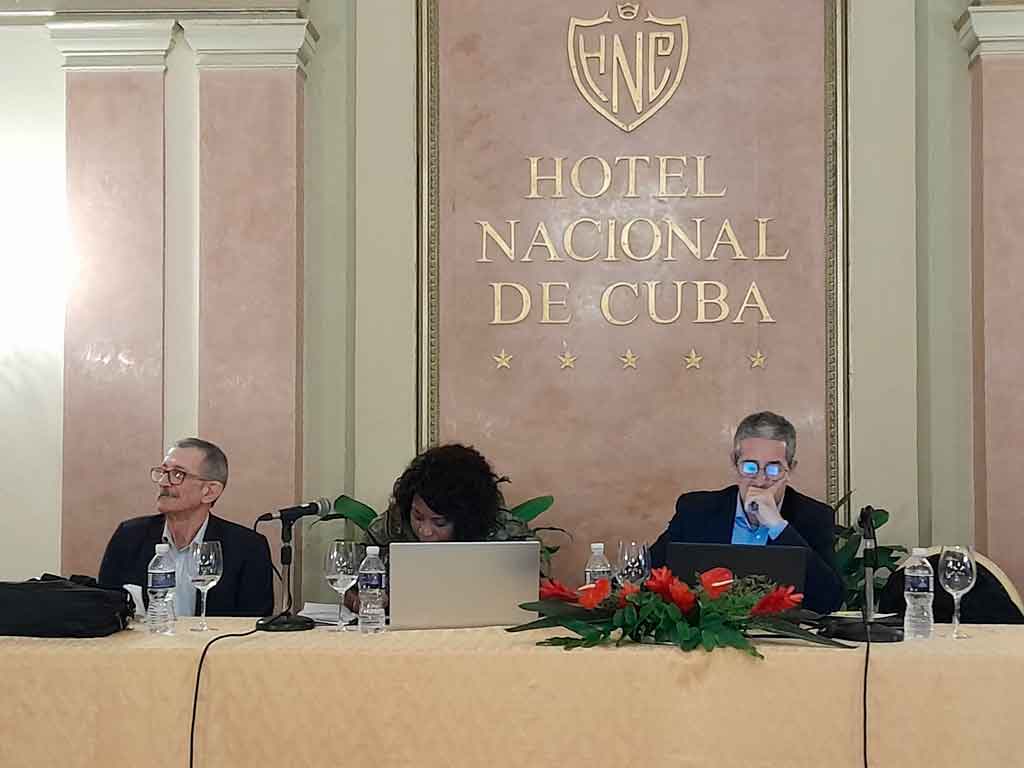Researchers, experts and collaborators from the CIEM met at the Hotel Nacional de Cuba to discuss the current world panorama.
The first presentation, United States in world trade: rivalries and tensions, was given by CIEM researcher Jonathan Quirós, who said that trade is one of the areas that reflects the relative hegemonic decline of that northern nation. Although he stressed that it continues to be the largest world trader.
He addressed the differences in trade relations established during the administrations of Barack Obama, Donald Trump and Joe Biden, in their forms of pressure against China.
Quirós noted that changes are also seen in geographical patterns of world trade such as the accumulation of trade barriers since 2018 and the growing geopolitical tensions with reflections in some of the main economies of the world.
He exemplified how while the United States and China reduced their direct commercial interdependence, the United States and European Union increased it.
At the same time, there was an increase in China’s trade with Russia and Mexico.
CIEM Deputy Director Jourdy James, in turn, chaired the debate on the European Union (EU): integration and crises in the present century. Advances and costs.
James pointed out that among the community achievements are the increase in intra-regional trade; and the increase in common agricultural, monetary and fiscal harmonization policies. Accompanied by the creation of a single market and currency, expansion to 27 members, as well as new candidates: Ukraine, Moldova, Albania, Montenegro, North Macedonia and Türkiye.
However, amid of this, internally, there are costs such as the North-South gap or different types of countries within it, as well as the growing regional disparities between and within nations, the expert said. Low rates of economic growth are also seen on a trend basis.
Referring to the geopolitical crisis of the conflict in Ukraine since 2022, she explained that the war situation revealed a set of weaknesses in community integration, including the high geopolitical vulnerability due to high dependence on imported fossil fuels, for example Russia’s gas and oil.
She also mentioned the possible transformation of the EU into a less autonomous international player, at least in terms of security; reduction of intra-community divisions on migration and energy.
James added that there is bigger fiscal solidarity, probably through another attempt at selective mutualization of the debt.
Meanwhile, researcher Mariano Bullón addressed Integration in Latin America and the Caribbean, a historical and current review of the regional situation.
According to Bullón, there is no complementarity but there are economic asymmetries in the region at present.
There is a lack of political consensus, among which the sequence, need, interest, motivation, action, together with different political signs of government stand out, as well as alternation of political-economic cycles, foreign interference and consequently stagnation and low level of effectiveness of the processes.
jg/ro/tdd









